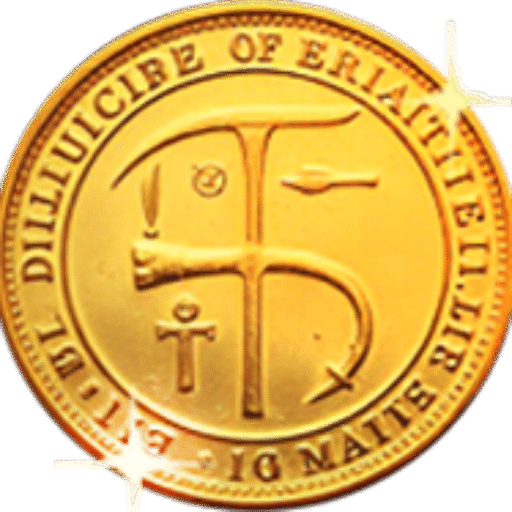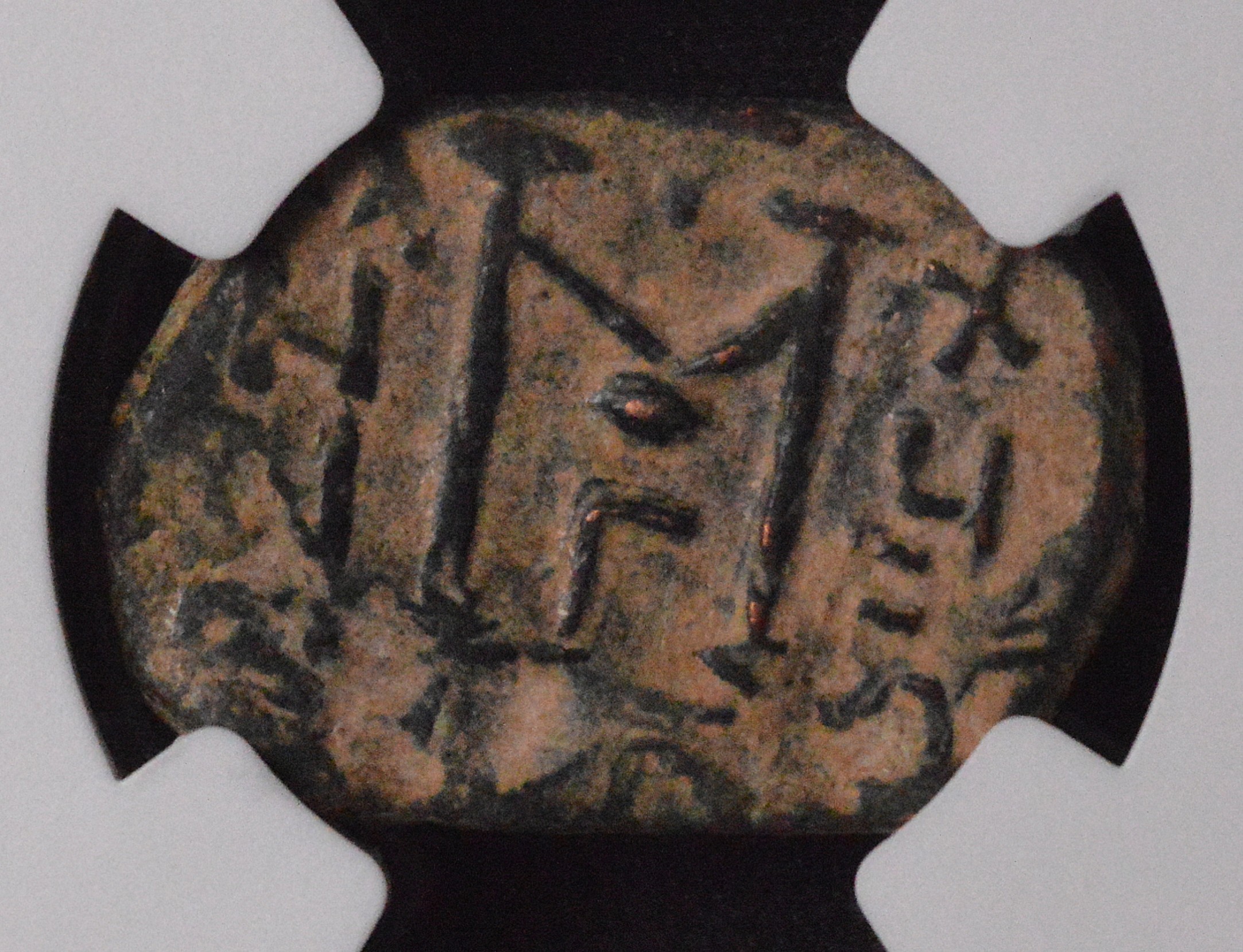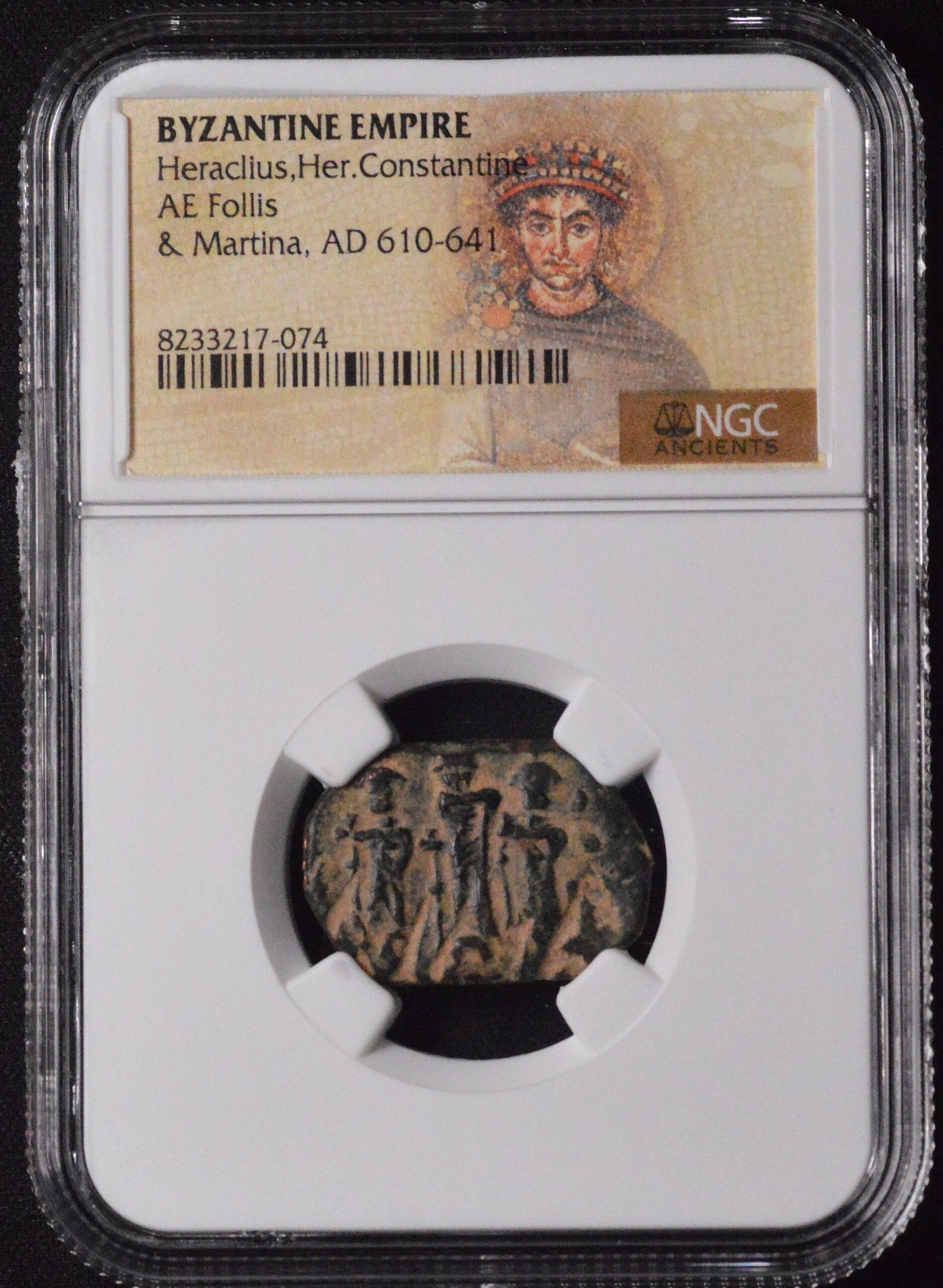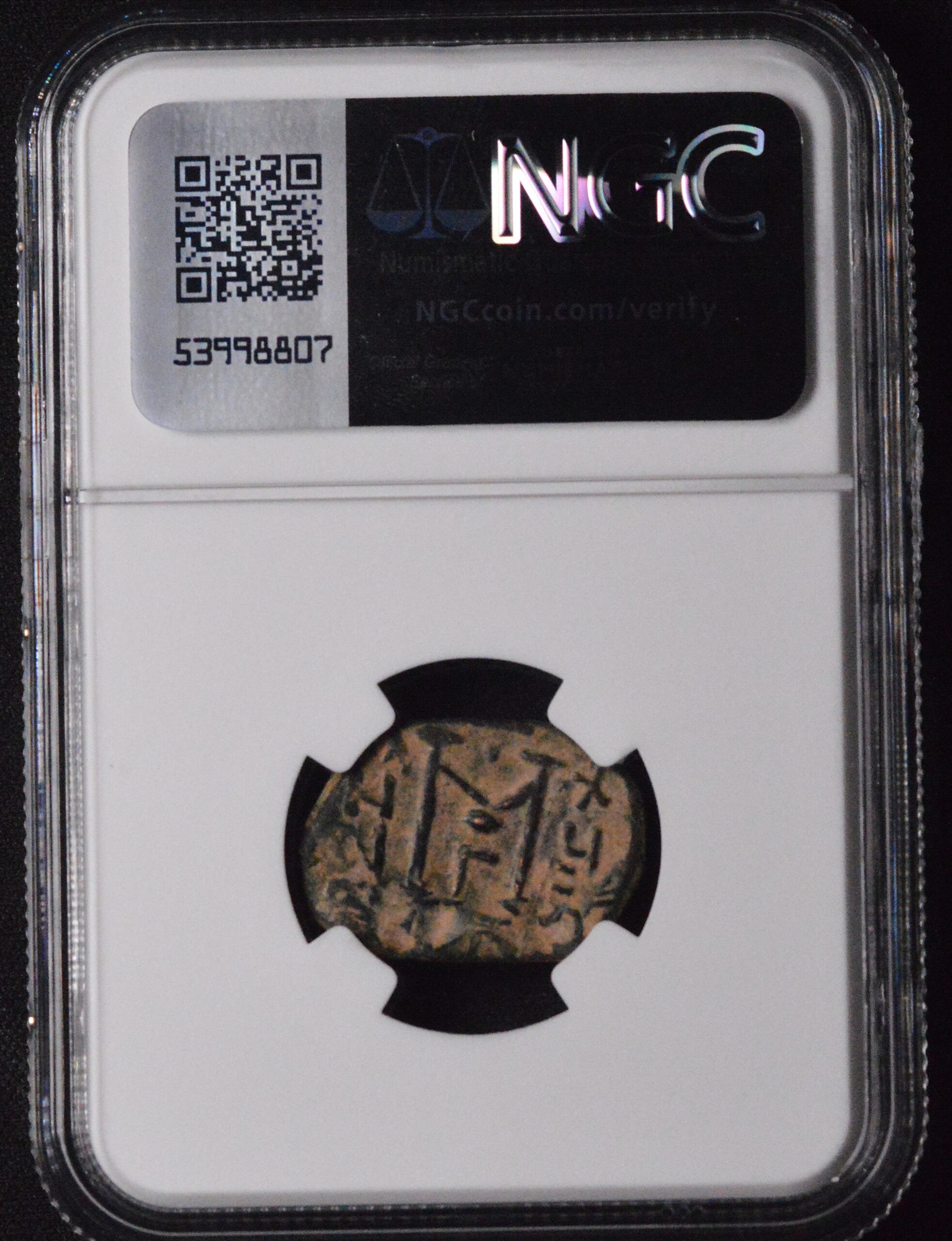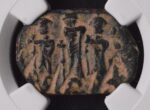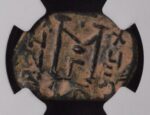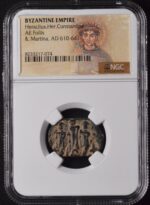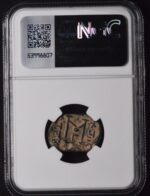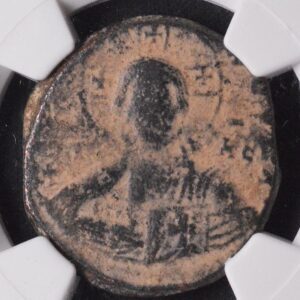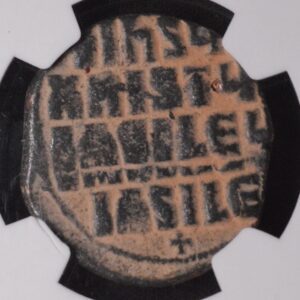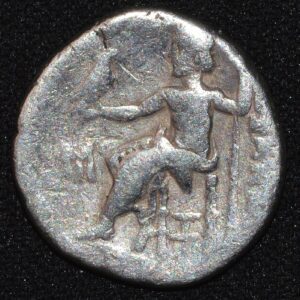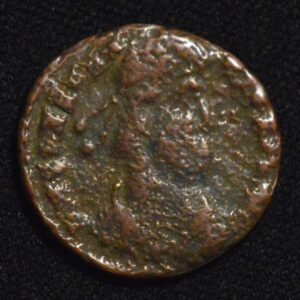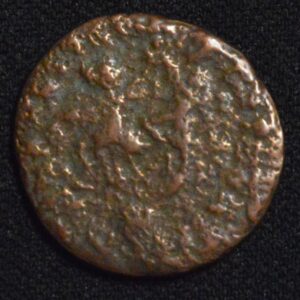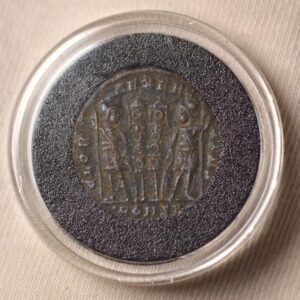FREE SHIPPING
Free Shipping for Orders over $150
Description
The coin featuring Heraclius Constantine and Martina from the Byzantine Empire (AD 610-641) is an attractive and historically fascinating bronze (AE) issue, often classified as a follis. These coins were struck during the joint reign of Heraclius, his son Heraclius Constantine, and his second wife, Empress Martina. The period marked significant religious and political developments in the Eastern Roman Empire.
On such coins, the obverse typically depicts the standing or bust images of Heraclius, Heraclius Constantine, and Martina. Heraclius, usually in the center, is shown crowned and in imperial regalia, flanked by his son and his wife, who are also crowned and dressed as co-rulers. Each figure is often shown holding symbols of imperial authority, such as globus crucigers. The reverse usually features a large “M,” representing the denomination (follis), along with other marks indicating the regnal year, mint, and sometimes Christian symbols such as a cross.
These coins are highly prized for their representation of three-figure imperial portraiture—a rarity in Byzantine numismatics—and their connection to a turbulent yet pivotal era of Byzantine history. When certified authentic by NGC, collectors are assured of the coin’s genuineness and better preservation, enhancing both value and desirability.
The Heraclius, Heraclius Constantine, and Martina follis from this era serves as a tangible artifact tying collectors directly to the Byzantine Empire’s dynastic and religious history. Its beautiful surfaces and authentic patina make it a standout addition to any collection of ancient or Byzantine coins.
The coin featuring Heraclius Constantine and Martina from the Byzantine Empire (AD 610-641) is an attractive and historically fascinating bronze (AE) issue, often classified as a follis. These coins were struck during the joint reign of Heraclius, his son Heraclius Constantine, and his second wife, Empress Martina. The period marked significant religious and political developments in the Eastern Roman Empire.
On such coins, the obverse typically depicts the standing or bust images of Heraclius, Heraclius Constantine, and Martina. Heraclius, usually in the center, is shown crowned and in imperial regalia, flanked by his son and his wife, who are also crowned and dressed as co-rulers. Each figure is often shown holding symbols of imperial authority, such as globus crucigers. The reverse usually features a large “M,” representing the denomination (follis), along with other marks indicating the regnal year, mint, and sometimes Christian symbols such as a cross.
These coins are highly prized for their representation of three-figure imperial portraiture—a rarity in Byzantine numismatics—and their connection to a turbulent yet pivotal era of Byzantine history. When certified authentic by NGC, collectors are assured of the coin’s genuineness and better preservation, enhancing both value and desirability.
The Heraclius, Heraclius Constantine, and Martina follis from this era serves as a tangible artifact tying collectors directly to the Byzantine Empire’s dynastic and religious history. Its beautiful surfaces and authentic patina make it a standout addition to any collection of ancient or Byzantine coins.
The coin featuring Heraclius Constantine and Martina from the Byzantine Empire (AD 610-641) is an attractive and historically fascinating bronze (AE) issue, often classified as a follis. These coins were struck during the joint reign of Heraclius, his son Heraclius Constantine, and his second wife, Empress Martina. The period marked significant religious and political developments in the Eastern Roman Empire.
On such coins, the obverse typically depicts the standing or bust images of Heraclius, Heraclius Constantine, and Martina. Heraclius, usually in the center, is shown crowned and in imperial regalia, flanked by his son and his wife, who are also crowned and dressed as co-rulers. Each figure is often shown holding symbols of imperial authority, such as globus crucigers. The reverse usually features a large “M,” representing the denomination (follis), along with other marks indicating the regnal year, mint, and sometimes Christian symbols such as a cross.
These coins are highly prized for their representation of three-figure imperial portraiture—a rarity in Byzantine numismatics—and their connection to a turbulent yet pivotal era of Byzantine history. When certified authentic by NGC, collectors are assured of the coin’s genuineness and better preservation, enhancing both value and desirability.
The Heraclius, Heraclius Constantine, and Martina follis from this era serves as a tangible artifact tying collectors directly to the Byzantine Empire’s dynastic and religious history. Its beautiful surfaces and authentic patina make it a standout addition to any collection of ancient or Byzantine coins.
CUSTOMER FEEDBACK




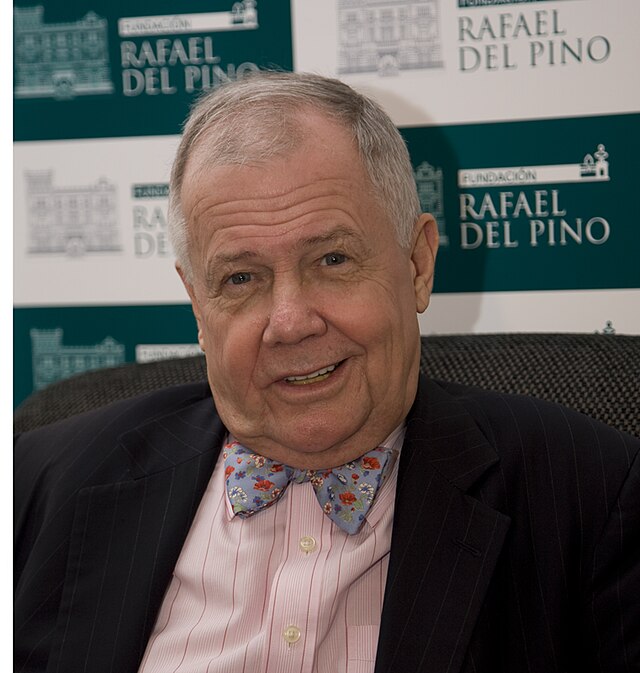



Other Products to See




SHIPPING POLICY
Your order is shipped from the United States with USPS tracking within one business day.
14 Day Return Policy
You can return your item back within
14 days of the purchase

Secure payments
Your payments are 100% secure and are processed through Square or PayPal on a protected security network.
SHIPPING POLICY
FREE International and Domestic (United States) shipping. Your order is shipped with USPS tracking 24 hours after you order.
14 Day Return Policy
You can return your item back within
14 days of the purchase

Secure payments
Your payments are 100% secure and are processed through Square or PayPal on a protected security network.
RESOURCES
support
Get Fresh Articles!
Sign up now to receive our articles for the latest insights and promotions!
RESOURCES
support
Get Fresh Articles!
Signup our newsletter to get update insight or promotions.

